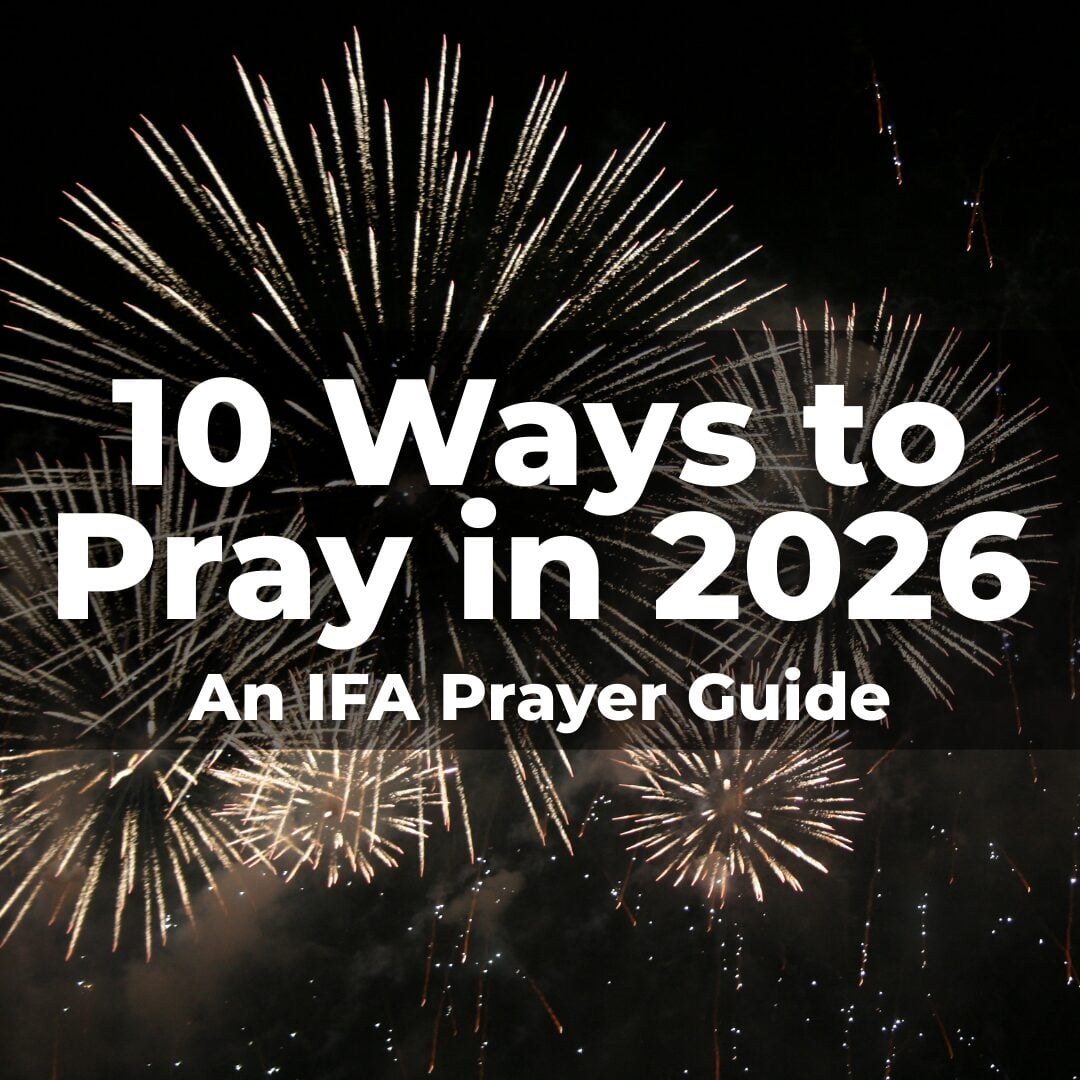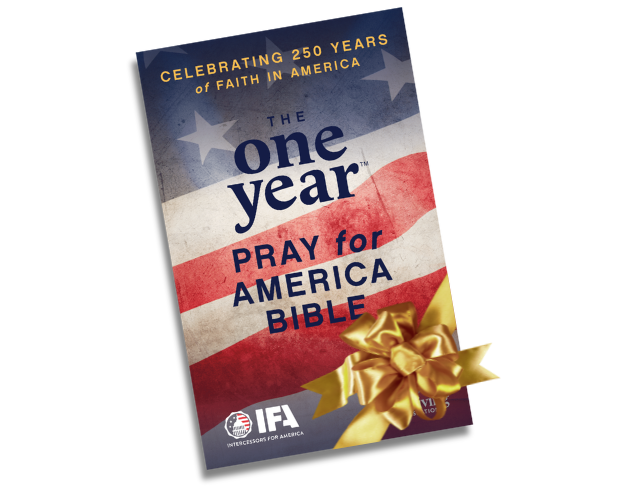KEEPING THE NUCLEAR FAMILY IS KEY FOR AMERICA
A PASTOR’S MESSAGE ON OVERCOMING VICTIM MENTALITY
SHOCKING : BIDEN’S TAXPAYER FUNDING FOR ABORTION OUTWEIGHS OBAMA?
BIDEN SAYS U.S. IS JUST AS DIVIDED AS THE CIVIL WAR
DAVE KUBAL SHARES A WORD FROM THE LORD FOR IFA INTERCESSORS
KEEPING THE NUCLEAR FAMILY IS KEY FOR AMERICA
The nuclear family is disintegrating — or so Americans might conclude from what they watch and read. The quintessential nuclear family consists of a married couple raising their children. But from Oscar-winning Marriage Story’s gut-wrenching portrayal of divorce or the Harvard sociologist Christina Cross’s New York Times op-ed in December, “The Myth of the Two-Parent Home,” discounting the importance of marriage for kids, one might draw the conclusion that marriage is more endangered than ever — and that this might not be such a bad thing.
Meanwhile, the writer David Brooks recently described the post–World War II American concept of family as a historical aberration — a departure from a much older tradition in which parents, grandparents, siblings, and cousins all look out for the well-being of children. In an article in The Atlantic bearing the headline “The Nuclear Family Was a Mistake,” Brooks argued that the “nuclear family has been crumbling in slow motion for decades.” He sees extended families and what he calls “forged families” — single parents, single adults, and others coming together to support one another and children — as filling the vacuum created by the breakdown of the nuclear family.
Yet the search for alternate forms of family has two major flaws. First, there’s evidence indicating that the nuclear family is, in fact, recovering. Second, a nuclear family headed by two loving married parents remains the most stable and safest environment for raising children.
There are, of course, still reasons for legitimate concern about the state of the American family. Marriage today is less likely to anchor family life in many poor and working-class communities. While a majority of college-educated men and women between 18 and 55 are married, that’s no longer true for the poor (only 26 percent are married) and the working class (39 percent). What’s more, children from these families are markedly less likely to live under the same roof as their biological parents than their peers from better-off backgrounds are. . . .
Today, the divorce rate is down, having fallen by more than 30 percent since peaking around 1980, in the wake of the divorce revolution. And, since the Great Recession, out-of-wedlock births are now dipping as well. Less divorce and less nonmarital childbearing means that more children are being raised in stable, married families. Since 2014, the share of kids in intact families has begun to climb, reversing a decades-long trend in the opposite direction. And as Brooks noted — citing research that one of us conducted at the University of Virginia — the nuclear family headed by married parents remains a personal ideal even among men and women who harbor no moral objections to alternative family structures.
None of this suggests that scholars and social commentators are wrong to extol the role extended families can play in improving children’s lives. In her New York Times article raising questions about the importance of the two-parent home, Cross hypothesized that living closer to extended family may actually be helping protect black children “against some of the negative effects associated with parental absence from the home.” And, in Brooks’s evocative telling, the alternatives to the nuclear family hold enormous promise: “Americans are hungering to live in extended and forged families,” arrangements that “allow more adults and children to live and grow under the loving gaze of a dozen pairs of eyes, and be caught, when they fall, by a dozen pairs of arms.”
Grandparents, for example, are sharing homes with children and grandchildren; single adults and single parents are forging novel alliances on websites like CoAbode, where, according to Brooks, “single mothers can find other single mothers interested in sharing a home.” These emerging arrangements not only afford people more freedom to choose their own ties that bind, but they also promise to fill the void left in the absence of a strong nuclear family.
There’s no question that “a dozen pairs of arms” can make lighter work of family life. Society should applaud those who step up to try to rescue adults and children left adrift in a nation where, despite promising trends, many children still grow up outside an intact two-parent family.
But Americans should not presume that society can successfully replace families headed by married parents with models oriented more around kith and kin. Caution is especially warranted as extended families and communities struggle to foster upward mobility or to raise the next generation successfully in circumstances where the family once anchored by marriage has broken down in their midst.
It turns out that the relationship between nuclear families and larger communities is more symbiotic than substitutionary, more interdependent than interchangeable. Whatever the merits of extended or other nonnuclear forms of family life, research has yet to show that they are entirely equipped to shoulder the unique role of a child’s two parents.
Today, most multigenerational households — which include grandparents, parents, and children — contain only one parent. This often occurs because a mother has moved in with her own parent (or the reverse) following a divorce or breakup. According to the sociologist Wendy Wang, 65 percent of multigenerational families include a single parent. But research reveals mixed outcomes for such households.
Sara McLanahan of Princeton University and Gary Sandefur of the University of Wisconsin have found that the average child raised by a “mother and grandmother is doing about the same as the average child raised by a single mother” on outcomes such as dropping out of high school or having a teen birth. And in the absence of both parents, children raised by their extended kin, such as an aunt or uncle, are significantly more likely to have, in the words of one study, “higher levels of internalizing problems” — including loneliness and sadness — compared to their peers raised by married parents. As for other emerging forms of family, such as forged families, there are well-founded reasons for skepticism about the role unrelated adults might play in raising a child. Over the years, study after study has detailed the many possible downsides to introducing unrelated adults, especially men, into children’s lives without the presence of those children’s married parents.
This is because, sadly, adults who are unrelated to children are much more likely to abuse or neglect them than their own parents are. One federal report found that children living in a household with an unrelated adult were about nine times more likely to be physically, sexually, or emotionally abused than children raised in an intact nuclear family. All this is to say that, for kids, it matters if all the pairs of arms raising them include — first and foremost — those of their own parents.
The positive effects of stable marriage and stable nuclear families also spill over. Neighborhoods, towns, and cities are more likely to flourish when they are sustained by lots of married households. The work of the Harvard sociologist Robert Sampson tells us that neighborhoods with many two-parent families are much safer. In his own words: “Family structure is one of the strongest, if not the strongest, predictor[s] of variations in urban violence across cities in the United States.”
His Harvard colleagues, the economists Raj Chetty and Nathaniel Hendren, have drawn similar conclusions about the relationship between the health of the American dream and the presence of two-parent families in a community. Working with a team of scholars, they found that black boys are more likely to achieve upward economic mobility if there are more black fathers in a neighborhood — and more married couples, as well. And for poor children of all races, Chetty and his team have found that the fraction of children with single parents in a given community is the strongest and most robust predictor of economic mobility — or its absence. Children raised in communities with high percentages of single mothers are less likely to move up. In other words, it takes a village — but of married people — to raise the odds that a poor child will have a shot at the American dream.
To be sure, the isolated nuclear family detached from all social support is simply not workable for most people. Married couples raising children — as well as other family forms — are more likely to thrive when they are embedded in strong networks of friends, family, community, and religious congregations.
Likewise, communities are stronger and safer when they include lots of committed married couples. It’s good news, then, that the share of children being raised by their own married parents is on the rise. Extended kin can (and sometimes must) play a greater role in meeting children’s needs. But as any parent knows, when it comes to an inconsolable child, even a “dozen pairs of arms” from the village don’t quite compare to the warm and safe embrace of Mom or Dad.
What are your thoughts on the Nuclear family? Let us know your thoughts and prayers for America in the comments below!
(Excerpt from AEI. Article written by AEI. Photo by Josue Michel/UnSplash)
Partner with Us
Intercessors for America is the trusted resource for millions of people across the United States committed to praying for our nation. If you have benefited from IFA's resources and community, please consider joining us as a monthly support partner. As a 501(c)3 organization, it's through your support that all this possible.


We use cookies to ensure that we give you the best experience on our website. If you continue to use this site we will assume that you are happy with it. Privacy Policy





Comments
The strength of a nation lies in the homes of it’s people.—- Abraham Lincoln
Not from the Bible, but President Lincoln knew the importance of families in America. Lord, please help us strengthen families and raise up the next generation to know you. Amen!
Father, so many families are hurting and fractured. Please Lord God, “restore broken families! Make Your face shine upon them and they will be saved.“ You said, “Your Spirit, who rests on us and Your Words which You put in our mouths will not depart from our mouths, our children mouths or from the mouths of our children’s children…now or ever.” I have claimed this covenant for my own family and today, ask this for all families. When Job prayed for his friends You restored his fortunes and gave him twice as much as he had before. Father, I pray for “my friends” and ask that whatever they have lost in bad times, You would restore abundantly just as You did with Job. You know the condition of each and every family and only You can make each one better than their hopes and dreams. I ask this in the Name of Jesus Christ who in His sacrifice enabled me to call You Father. Amen
Psalm 80
Isaiah 59